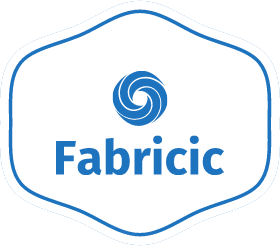Towels, those everyday essentials of personal hygiene, play a vital role in our lives. They are our post-shower companions, our gym buddies, and our kitchen helpers.
However, with their frequent use, towels can become breeding grounds for bacteria and germs. In the quest for cleanliness, many have wondered: Can you spray Lysol on towels? In this article, we delve into the science and practicality of this common household concern.
Understanding Lysol
Composition and purpose
Lysol, a trusted name in disinfection, is known for its germ-fighting properties. Its composition typically includes active ingredients like benzalkonium chloride and ethanol, designed to eradicate a wide range of pathogens.
These potent components act as the first line of defense against bacteria, viruses, and fungi, making Lysol a go-to choice for maintaining cleanliness in homes and public spaces alike.
Lysol’s effectiveness against germs
Before delving into the towel debate, it’s essential to acknowledge Lysol’s proven effectiveness against germs.
Extensive laboratory testing and real-world applications have demonstrated its ability to eliminate pathogens, providing peace of mind when it comes to hygiene.
Lysol’s reputation for disinfecting surfaces and preventing the spread of illnesses has made it a household staple for generations.
Read More:
Best Fabric Disinfectant Spray – Safe for Clothes
Why Consider Using Lysol on Towels?
Towels as potential breeding grounds for bacteria
Towels, used frequently and often in damp conditions, can become the perfect breeding grounds for bacteria. Factors like moisture and warmth create an ideal environment for germs to thrive.
In bathrooms, for instance, towels are exposed to a constant influx of moisture from showers and hands, creating conditions conducive to bacterial growth. This reality prompts many individuals to seek additional ways to ensure their towels remain a safe and hygienic choice for personal use.
Ensuring the freshness of towels
Spraying Lysol on towels is one way to ensure they remain fresh, odor-free, and, most importantly, hygienic. This practice can provide an additional layer of protection against bacteria buildup.
By incorporating Lysol into your towel care routine, you can extend the time between washes, thereby saving water and energy.
Additionally, Lysol-treated towels can offer reassurance, particularly during cold and flu seasons, when preventing the spread of germs is of paramount importance.
Guidelines for Spraying Lysol on Towels
Appropriate Lysol product selection
Not all Lysol products are suitable for spraying directly onto towels. It’s crucial to choose a Lysol variant specifically formulated for fabric use to avoid damage or skin irritations.
Look for Lysol products labeled as safe for fabrics, as they are designed to disinfect without compromising the integrity of the material. These formulations are typically gentler on textiles while still providing effective germ protection.
Proper application technique
When applying Lysol to towels, ensure even coverage without oversaturation. A light misting is usually sufficient to disinfect without soaking the fabric. Spraying from a distance of a few inches helps distribute the product evenly.
It’s important to pay attention to the seams and folds of the towel, as these areas can harbor bacteria. To ensure comprehensive disinfection, mist the entire surface and let the Lysol work its magic.
Adequate drying time
Allow the Lysol-treated towels to air dry thoroughly before use to ensure that any residue evaporates. This step is crucial to prevent skin irritation or allergenic reactions. Proper drying also ensures that the towels are safe and comfortable to use.
Keep in mind that allowing ample drying time can also help mitigate any potential odor associated with disinfectant products, leaving your towels smelling fresh and clean.
Potential Concerns and Alternatives
Allergies and sensitivities
Some individuals may be sensitive or allergic to the chemicals in Lysol. It’s important to be aware of potential reactions and discontinue use if any adverse effects occur. Skin irritation, redness, or itching can be signs of an allergic reaction.
In such cases, consider alternative disinfection methods to ensure your towels remain safe for use by everyone in your household.
Alternative disinfection methods
If Lysol isn’t suitable or preferable, alternative methods, such as hot water laundering, vinegar solutions, or specialized fabric disinfectants, can be considered for towel hygiene.
For those with sensitivities or concerns about chemical residues, these alternatives can offer effective germ protection without the use of disinfectant sprays.
Caring for Lysol-Treated Towels
Laundering and maintenance
Regular washing of Lysol-treated towels is essential to remove any residual chemicals and maintain their softness. Follow care instructions to ensure longevity.
Use a gentle detergent to avoid compromising the disinfecting properties of Lysol. Launder towels separately or with like-colored items to prevent potential color transfer.
Monitoring for residue buildup
Over time, Lysol residue can accumulate in towels. Regularly inspect and replace towels if you notice a persistent chemical smell or a decline in their absorbency.
Proper maintenance ensures that your towels remain both safe and enjoyable to use, allowing you to strike a balance between hygiene and comfort.
Conclusion
Balancing hygiene and safety in our daily lives often leads us to explore innovative methods of disinfection, such as spraying Lysol on towels. While this practice can help maintain towel freshness and cleanliness, it’s essential to do so responsibly, taking into account potential allergies and sensitivities.
Making informed decisions about towel care ensures that we continue to enjoy the comfort and convenience towels offer while prioritizing our health and well-being.
By understanding the benefits and considerations of using Lysol on towels, you can make choices that align with your personal preferences and hygiene needs.
